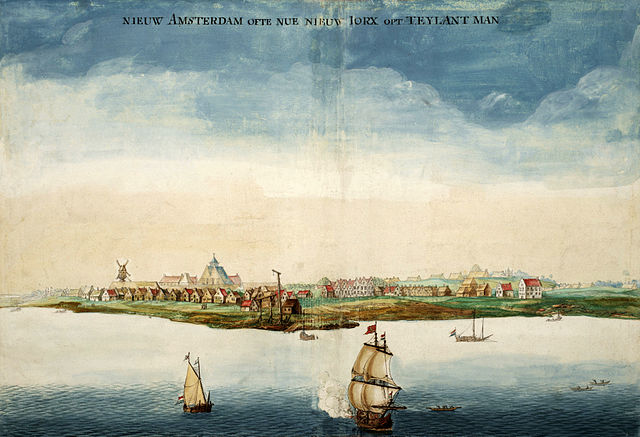Fort Amsterdam was a fortification on the southern tip of Manhattan Island at the confluence of the Hudson and East rivers. The fort and the island were the center of trade and the administrative headquarters for the Dutch and then British/Colonial rule of the colony, of New Netherland and thereafter the Province of New York. The fort was the nucleus of the settlement on the island and greater area, which was named New Amsterdam by the first Dutch settlers, and eventually renamed New York by the English, and was central to much of New York's early history.
Fort Amsterdam in 1660. (detail)
Fort Amsterdam on Manhattan in 1626
Fort Amsterdam Now the Battery in Kieft’s Days (1637)
Illustration of Minuit and the purchase of Manhattan Island
Manhattan is the most densely populated and geographically smallest of the five boroughs of New York City. The borough is coextensive with New York County, the smallest county by geographical area in the U.S. state of New York. Located almost entirely on Manhattan Island near the southern tip of the state, Manhattan constitutes the center of the Northeast megalopolis and the urban core of the New York metropolitan area. Manhattan serves as New York City's economic and administrative center and has been described as the cultural, financial, media, and entertainment capital of the world.
Midtown Manhattan, the world's largest central business district, in the foreground, with Lower Manhattan and its Financial District in the background
New Amsterdam, centered in what eventually became Lower Manhattan, in 1664, the year England took control and renamed it New York
Statue of George Washington in front of Federal Hall on Wall Street, where in 1789 he was sworn in as the first U.S. president.
Manhattan's Little Italy on the Lower East Side, c. 1900








